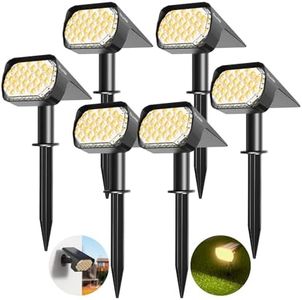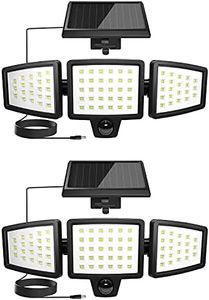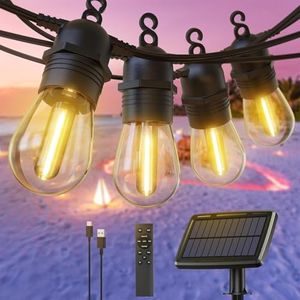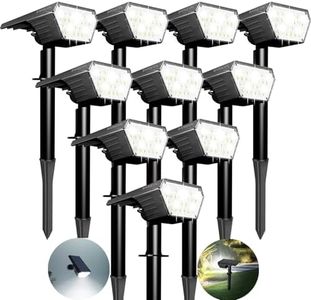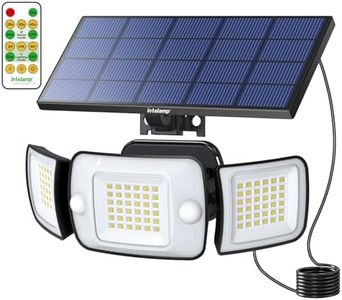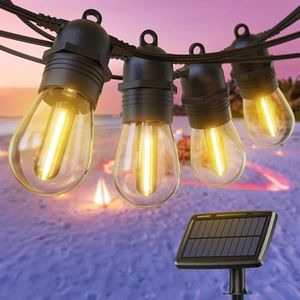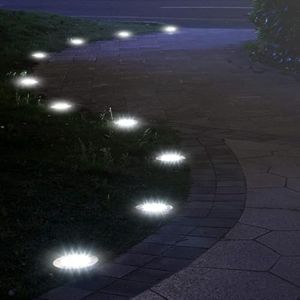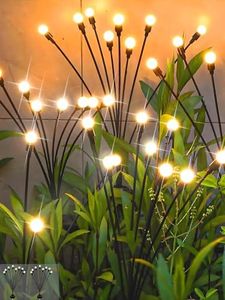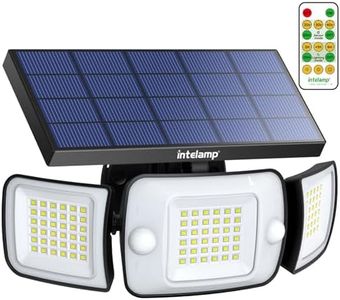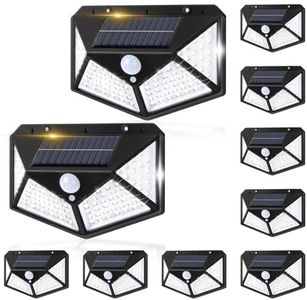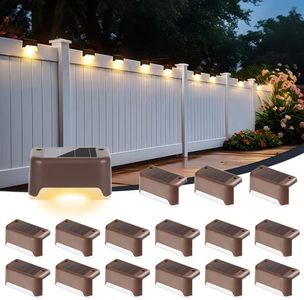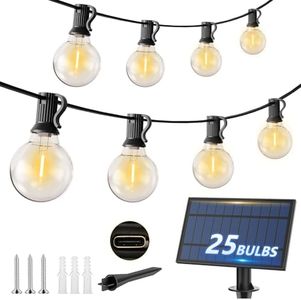We Use CookiesWe use cookies to enhance the security, performance,
functionality and for analytical and promotional activities. By continuing to browse this site you
are agreeing to our privacy policy
10 Best Solar Lights
From leading brands and best sellers available on the web.Buying Guide for the Best Solar Lights
When choosing solar lights, it's important to think about where you'll use them and what you want them to do. Solar lights are great for saving energy and are easy to install since they don't need electrical wiring. Before picking a model, consider whether you want to light up a pathway, add ambiance to a garden, or increase security around your home. Pay attention to how much sunlight your location gets, as this directly affects performance. Understanding the main specifications will help you match your needs to the right type of solar light.Brightness (Lumens)Brightness, measured in lumens, tells you how much light the solar light will produce. Low lumen values (about 5-20 lumens) provide a soft, decorative glow perfect for gardens or accent lighting. Medium levels (around 50-150 lumens) suit pathways and walkways, offering a balance between ambiance and visibility. High lumen ratings (over 200 lumens) give strong illumination and are best for security or spotlighting large areas. Consider how much light you need in your space—a pathway uses less light than a driveway—and choose brightness accordingly.
Battery CapacityBattery capacity determines how long the light will stay on after sunset, and is often measured in milliampere-hours (mAh). Smaller capacities (under 1000 mAh) usually run for a few hours, which is suitable for accent lighting or areas not used late at night. Medium capacities (1000-2200 mAh) keep lights on for most of the night, ideal for pathways or general yard lighting. Larger batteries (above 2200 mAh) can support dusk-to-dawn operation, which is best for security lights or areas needing extended lighting. Think about how long you want the lights to run and pick a capacity that matches your routine.
Solar Panel Type and SizeThe type and size of the solar panel affects how efficiently the light charges during the day. Basic models use small, less efficient panels suitable for decorative lights, while larger panels made from materials like monocrystalline silicon charge faster and work better in lower sunlight conditions. If your installation spot receives limited sunlight or you want the lights to charge quickly, go for larger or higher quality panels. In sunny, open areas, basic panels may be enough. Your local climate and the placement of your lights can help decide what's right for you.
Weather Resistance (IP Rating)Weather resistance, often described using an IP (Ingress Protection) rating, shows how well the light handles rain, dust, and other outdoor conditions. Lower ratings (IP44) mean the light is splash-proof and fine for sheltered spots. Moderate ratings (IP65) handle heavier rain and dust, making them suitable for most gardens and walkways. Higher ratings (IP67 and above) withstand immersion and harsh weather—best for exposed or extreme environments. Check your local weather and choose a rating that ensures your lights will last outside.
Lighting Modes and ControlsMany solar lights come with different modes, such as always-on, motion-activated, or dimming options. Some have light sensors that turn them on automatically at dusk. Fixed modes are simple and work well for decorative or general lighting. Motion detection is great for security or places you want lit only when someone is present. Adjustable controls offer flexibility if your lighting needs change. Think about how and when you want the lights to operate and decide which modes match your habits.

